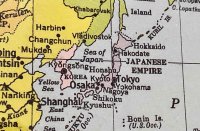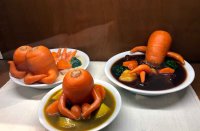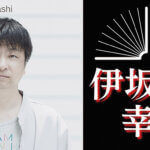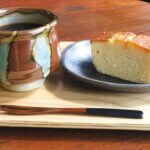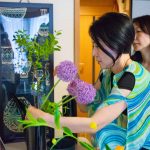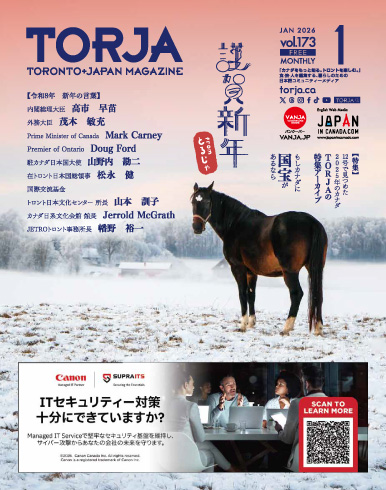Being Japanese Canadian: Reflections on a Broken World, exhibition at Royal Ontario Museum
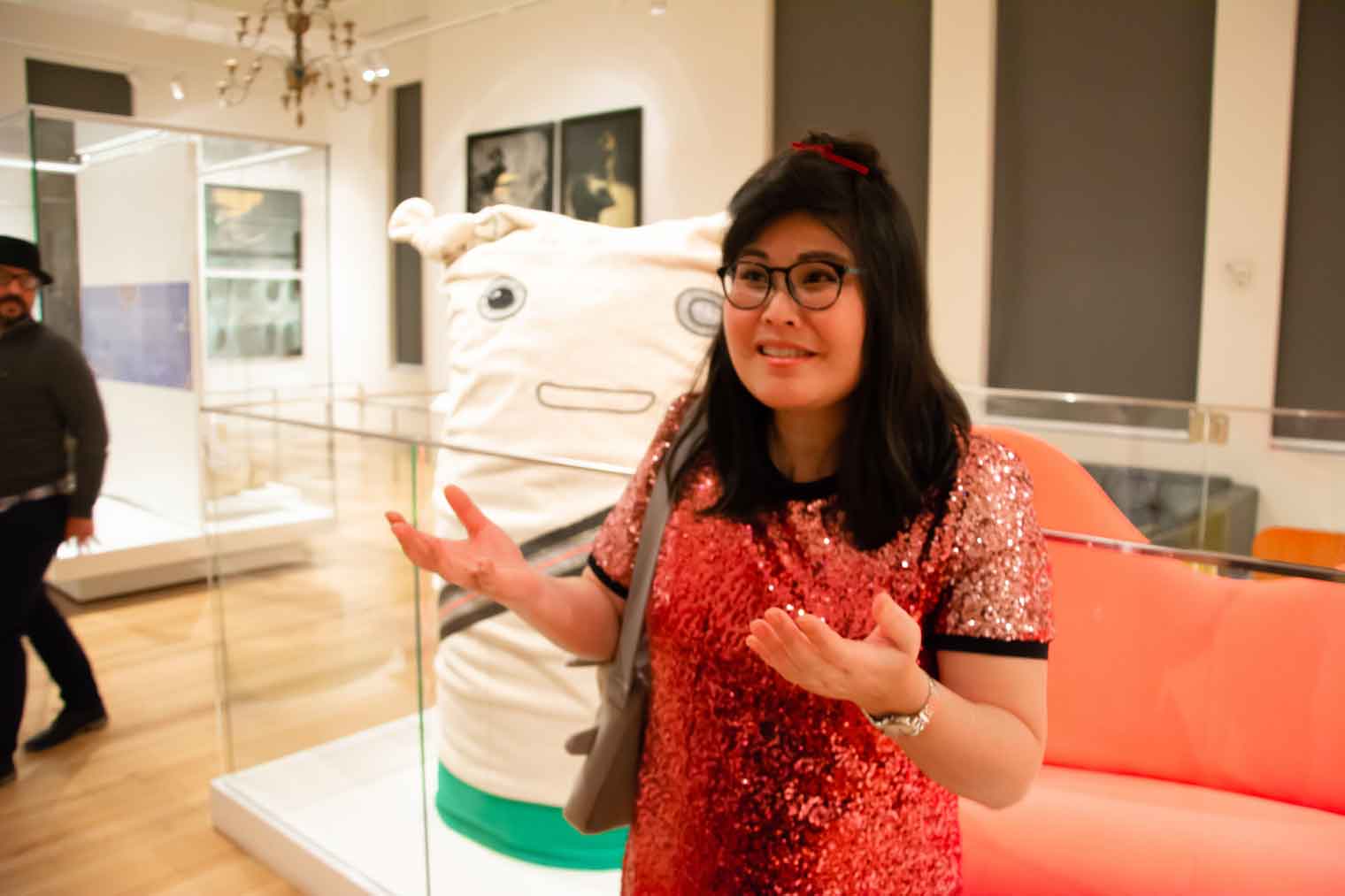
From a couple steps away, Laura, a Toronto-based multimedia artist in a sparkly red dress and Totoro bag, turned around. I decided to introduce myself. Staring at her large frame glasses and a tiny red bow on her head, she greeted me with warmth. The first thing she noted to me after I introduced myself to her, is her shoes. I gaze down at a small, white, delicate pair of geta(下駄).
“People say these are un-comfy, but they are,” she said with a smile.
After telling her that I too have a pair of geta (probably from the same place in Kyoto too—I didn’t tell her then but now she knows), I asked her if we can have a short conversation and take a photograph of her in front of her artwork. I pulled out my camera, adjusted the lenses, but, instead of facing me she stood on her toes, reached over the glass that surrounded the sculpture and started to pull the top of it. As if fluffing a pillow before one goes to bed, she straightened the sculpture, all the while commenting on the fact that it needs to look right. As she continued to straighten the inari zushi(稲荷寿司)-esque mascot (I later found out that that is her favorite sushi), people started to surround her. I wonder what she is doing?
“It’s a good thing people remember you being introduced in that sparkly red dress!” said the woman next to me.
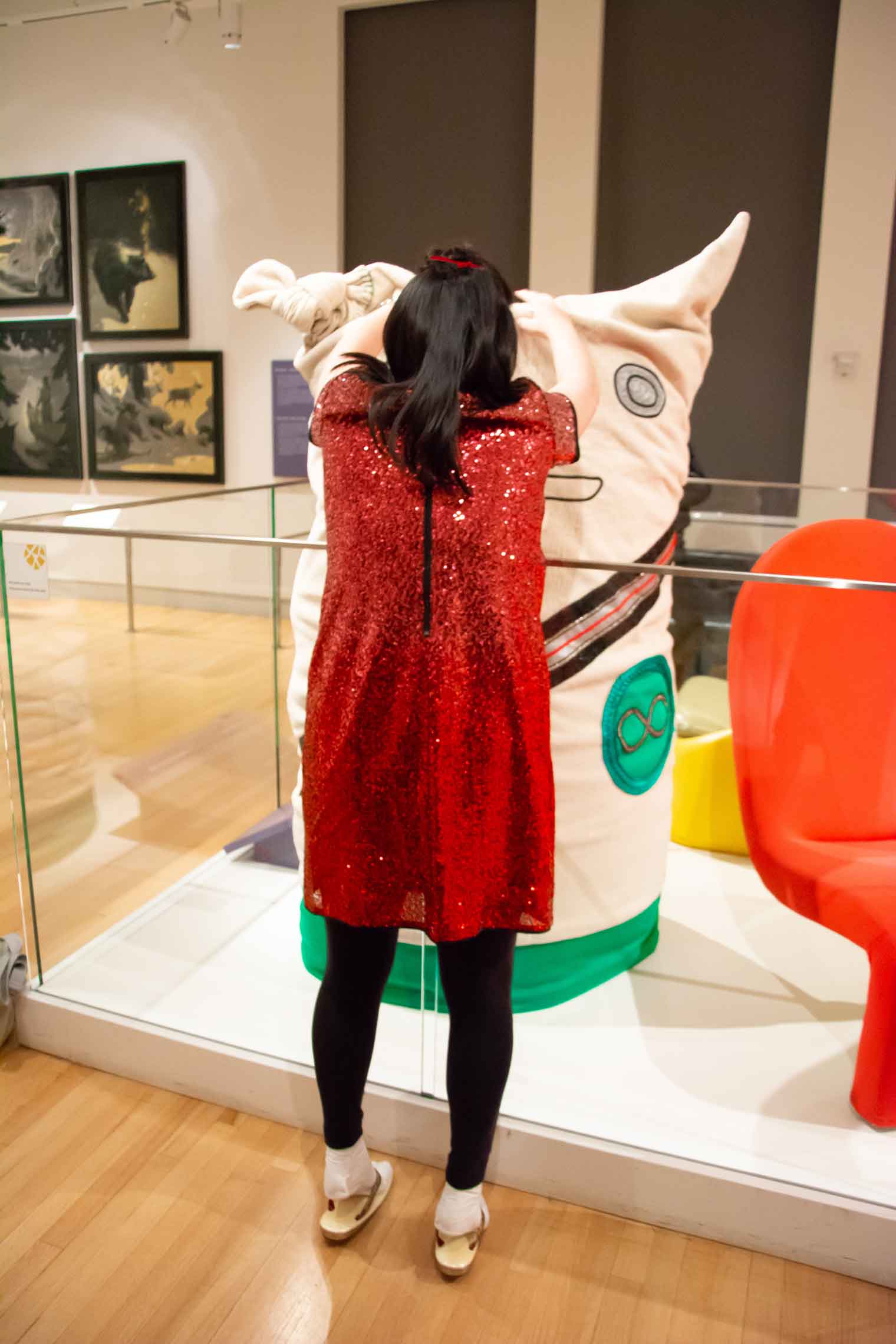
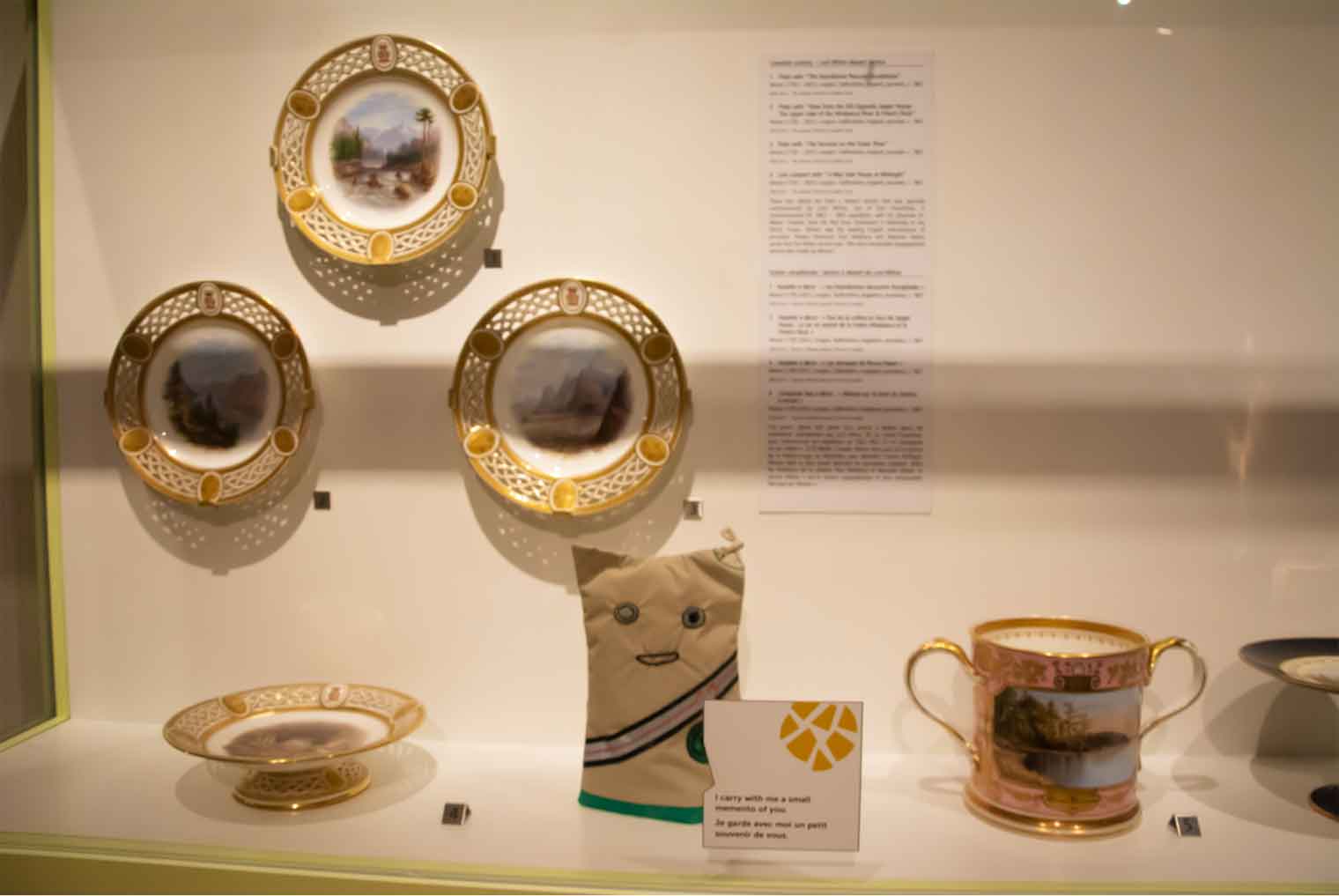
I look through the lens. The Emissary, which she explained to me, is a mascot for Japanese Canadians, because Japanese craze for mascot known as yuru-kyara(ゆるキャラ), but there is none that represents Japanese Canadians. It stared back at me and Laura gave me a charming smile. With a knot on its right top corner, the Emissary`s right eye is filled (it has an iris), while the other eye is left blank. The blank eye, rather than conveying a sense of hollowness, was inviting.
The left eye, she said, is left empty as it is a reference to the Daruma doll, a traditional Japanese doll—modeled after Bodhidharma—the founder of the Zen tradition of Buddhism. Considered a toy by some, it is regarded more as a talisman of good fortune in Japan. The blank eyes on Daruma dolls serve as symbols; one fills an eye in when setting a goal, and the other when the goal is accomplished.
Emissaries of Mission 42—a project featuring smaller versions of the one exhibited at Royal Ontario Museum, is an ongoing project by Shintani to send out Emissaries to different locations in Vancouver and Vancouver Island, British Columbia, only to be returned to their homes in Windsor, Ontario, while carrying with them an embroidered badge as a small gift for messengers. Her goal, she said, is to use the act of gift exchange as a kind of metaphysical language, a way to communicate with each other through a ritualistic act.
The theme of the exhibition is to remember the history of exile, dispossession, and internment of Japanese Canadians in the 1940s—a part of history that is not discussed enough when discussing history. And is a memory that past generation once tried to forget and whites (at the time) tried to repress. The knot tied on the head of Emissaries is a symbol, to seal, in the mind, a historythat was once neglected.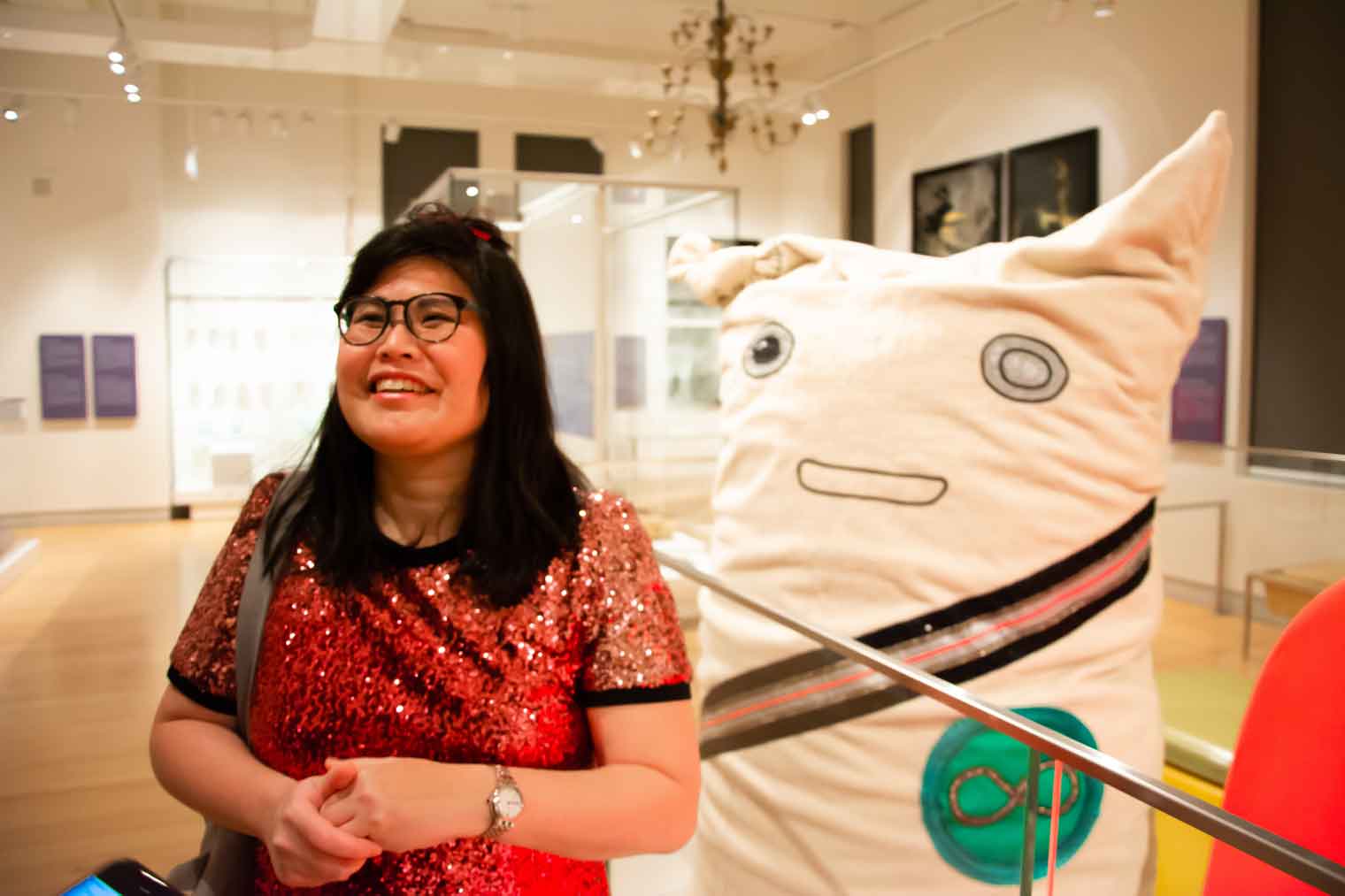
When asked what does it mean to have her work exhibited in such spaces, spaces that showcase, in their history sections, art created by European settlers, Laura explained to me that “I try to connect people, want them to interact directly with it but [having my work] shown is great because it’s not ideal—no places are ideal.” I look around, artworks are also being sealed away, behind glass. She referenced the traditional Japanese aesthetics, wabi-sabi—a world view centered on the acceptance of transience and imperfection, “It’s imperfection that makes perfect. The fact that my work doesn’t fit in in this space is fitting. That’s what make the art work.”
Laura Shintani Biography
Laura is a multimedia artist based in Toronto, who believes the viewpoint of the audience is key. She is interested in seeing people embrace the cycle of creativity – playing, problem solving, and reflecting. She hopes her audiences might be inspired to artistic expression and make a difference. No topic is taboo. Shintani encourages others to follow ideas that garner goodwill.
Official Website
http://www.laurashintani.com
http://emissarymission42.wixsite.com/lams
Being Japanese Canadian: Reflections on a Broken World
February 2, 2019 to August 5, 2019
Royal Ontario Museum
Level 1, Sigmund Samuel Gallery of Canada
This exhibition gives visitors the chance to understand personal perspectives on the exile, dispossession, and internment of Japanese Canadians during the 1940s through a series of artworks interspersed throughout the Sigmund Samuel Gallery of Canada. The installations include contemporary artists who experienced this history first hand, and those who grapple with their parents and grandparents’ experiences. Being Japanese Canadian prompts us to reflect on the long-lasting ramifications of this historical Canadian injustice, and what it means to be Canadian today.


